Estimated reading time: 15 minutes
Grooming your long-haired cat can be a bit like solving a fuzzy puzzle. If you’re facing the challenge of untangling knots and dealing with flying fur, you’re not alone. Many cat owners struggle to keep their fluffy friends looking and feeling their best.
One important fact to know is that regular grooming isn’t just for looks—it’s crucial for your cat’s health. Brushing away all that loose hair helps prevent messy hairballs from forming inside their stomachs.
This article will guide you through the process of grooming your long-haired feline friend, from brushing techniques to nail clipping—so they stay comfortable year-round.
Key Takeaways
- Brush your long-haired cat every day to stop mats and shed fur.
- Use the right tools like cat-safe shampoos, brushes, and nail clippers for grooming.
- Give your cat baths with a soft touch and make sure they are fully dry afterward.
- Clip your cat’s nails often so they don’t get too long and hurt them.
- When you groom your cat, always be gentle to keep it a happy time.
The Importance of Regular Grooming for Your Long-Haired Cat
Cat breeds with long hair, such as Maine Coons, Persians, and Ragdolls, usually begin to develop their full coats when they are kittens. It is important to your cat’s well-being and comfort that you properly groom them on a regular basis.
Preventing Matting
Long-haired cats are prone to matting, which can be painful and risky for their health. Regular grooming is vital in preventing mats from forming in your cat’s fur. By establishing a consistent routine of brushing and combing, you can reduce the risk of mats and tangles.
Using a wide-toothed comb and a mat comb will help remove knots and mats without harming your cat’s skin.
Matted fur cannot be removed by the cat itself, so it’s essential for owners to take responsibility for regular grooming to prevent this issue. Remember that establishing a routine with thorough brushing and combing is crucial in maintaining your long-haired cat’s fur health.
Reducing Hairballs
To reduce the number of hairballs your long-haired cat experiences, daily brushing is essential. When you regularly groom your cat, there’s less loose fur for them to swallow during self-grooming and this results in fewer hairballs forming in their stomach.
By establishing a routine for grooming and using proper techniques, such as gentle brushing to remove loose fur, you can significantly minimize the frequency of hairball expulsion.
Regular grooming not only reduces shedding but also prevents excessive grooming by your feline friend, which are major contributors to hairball formation.
When it comes to reducing hairballs in your long-haired cat, establishing a regular grooming routine and using proper techniques will go a long way in minimizing this common issue.
Preventing Skin Infections
Regular grooming helps remove dirt, parasites, and debris from your long-haired cat’s fur, reducing the risk of skin infections. During grooming sessions, you can check for signs of hair loss, redness, bumps, cuts, fleas or ticks that could lead to skin problems.
By keeping your cat’s skin and coat clean and healthy through regular grooming, you can prevent serious tangling and matting while also improving circulation.
Avoiding Flea and Tick Infestations
Regular grooming not only prevents skin infections but also plays a crucial role in avoiding flea and tick infestations for your long-haired cat. Due to their thick coats, long-haired cats are at increased risk for these pests.
Fleas and ticks can easily hide in the dense fur, making it challenging to detect an infestation. However, through diligent grooming practices such as brushing and using a flea comb, you can effectively remove these parasites from your feline friend’s coat before they become a larger issue.
By regularly checking for fleas and ticks during grooming sessions, you can ensure that any potential infestations are identified early on. This proactive approach helps in preventing the spread of these pests within your home environment and protects both your cat and family members from the health risks associated with flea and tick bites.
Reducing Overheating Risk
Long-haired cats can be at risk of overheating, especially during hot weather. Trimming their fur helps to prevent this. Regular brushing also reduces the amount of hair on their body, which further decreases the risk of overheating and discomfort for your feline friend.
It’s important to keep your long-haired cat’s coat well-maintained to ensure they stay cool and comfortable.
By trimming the hair short on your long-haired cat’s body, you can help them avoid overheating in warmer temperatures. Brushing not only removes shed hair but also prevents mats from forming, reducing the likelihood of overheating for your furry companion.
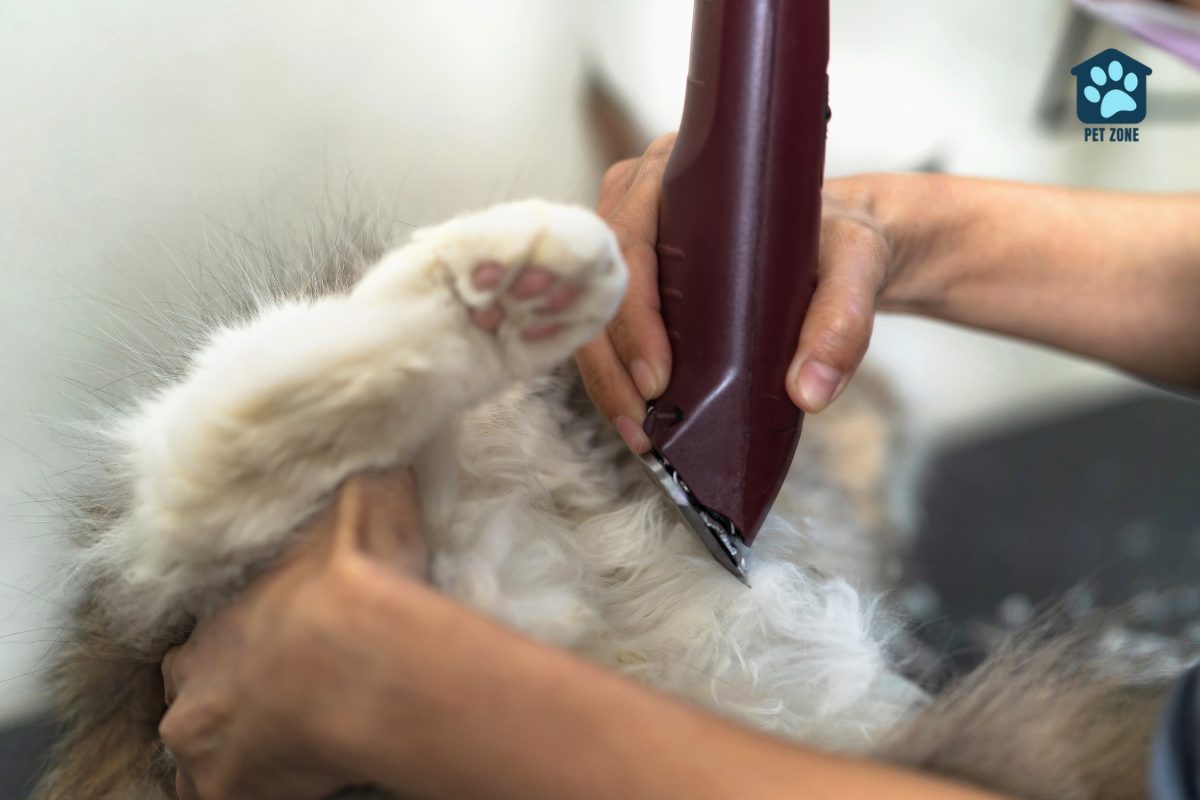
Key Steps to Grooming a Long-Haired Cat
Establishing a grooming routine is essential for your long-haired cat. Regular brushing, trimming, and bathing will help keep their coat healthy and prevent matting. Be sure to also clean their ears, clip their nails, and brush their teeth to maintain overall hygiene.
Setting a Routine
To set a proper routine for grooming your long-haired cat, consider these steps:
- Schedule regular grooming sessions at the same time each day to create consistency and make it easier for your cat to adapt to the routine.
- Begin with gentle brushing every day to prevent mats and tangles in your cat’s fur. Use a suitable brush or comb for long-haired cats.
- Introduce bathing sessions every few weeks, using cat-friendly shampoo and ensuring thorough rinsing to maintain a clean and healthy coat.
- Incorporate nail clipping into the routine every 2-4 weeks to prevent overgrown nails that may cause discomfort or potential injury.
- Make ear cleaning a part of the routine, checking for any signs of infection or excessive wax build-up.
- Brushing your cat’s teeth should be done regularly as part of their grooming routine to promote good oral health.
- Regularly examine your cat’s skin during grooming sessions, watching out for any changes, lumps, or signs of irritation.
Brushing the Coat
To effectively brush your long-haired cat’s coat, follow these steps:
- Use a slicker brush or comb with long teeth to gently brush your cat’s fur. This helps in removing tangles without causing discomfort.
- Start at the top layer of the coat and work your way down to the undercoat, ensuring thorough brushing to avoid matting.
- Always brush in the direction their coat grows to prevent your cat from feeling uneasy and promote a comfortable grooming experience.
- Regular brushing not only helps in reducing mats but also gives you an opportunity to check for any skin issues or abnormalities.
- Be gentle and patient, offering treats and positive reinforcement to encourage good behavior during grooming sessions.
Trimming the Hair
Trimming your long-haired cat’s fur is an important part of grooming. It helps prevent mats and keeps your cat comfortable. Here are the key steps to effectively trim your cat’s hair:
- Use cat-specific clippers or scissors designed for trimming pet fur to avoid accidental injuries.
- Gently trim the fur around the hindquarters, tail, and belly to prevent matting and reduce the amount of hair that can collect dirt and debris.
- Carefully trim around the ears, paws, and sanitary areas to maintain cleanliness and prevent discomfort.
- Take caution when trimming near the skin to avoid accidental cuts or injury to your cat.
- If you’re unsure about how to trim your cat’s fur, consider seeking guidance from a professional groomer.
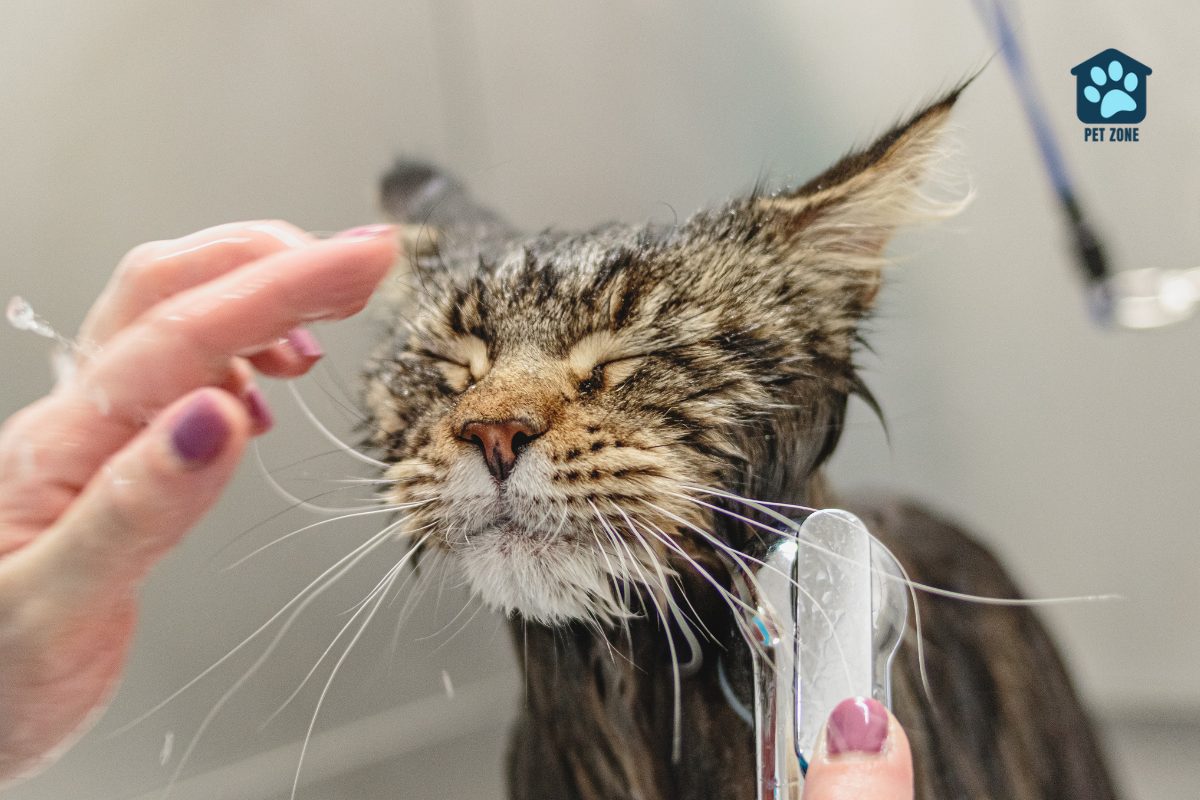
Bathing the Cat
To bathe your cat, follow these steps:
- Prepare a shallow tub with lukewarm water and place a non-slip mat at the bottom to help your cat feel secure.
- Gently wet your cat using a handheld spray nozzle or a cup, avoiding the ears and face, and apply cat-friendly shampoo to create a lather.
- Thoroughly rinse the shampoo from your cat’s fur to prevent skin irritation and ensure all residue is removed.
- Use a towel to gently dry your cat or allow them to air-dry in a warm room, ensuring they stay comfortable throughout the process.
- Reward your cat with treats or praise after their bath to create positive associations with grooming sessions.
Cleaning the Cat’s Ears
Cleaning your cat’s ears is essential for preventing ear infections and maintaining overall ear health. Here are the key steps to clean your cat’s ears:
- Gently wipe the visible part of the inner ear with a soft, damp cloth to remove dirt and wax buildup without inserting anything into the ear canal.
- Avoid using cotton swabs or any pointed objects inside the ear canal, as this can cause injury or push debris further in.
- Regularly check for redness, swelling, or unusual discharge in the ears, as these could indicate an infection that requires veterinary attention.
- Trim any excess hair around the ears using blunt scissors or an approved trimmer to prevent matting and dirt buildup.
- Use a vet-recommended ear cleaning solution and apply it to a cotton ball or pad before gently wiping the inside of your cat’s ears to remove any excess wax or dirt.
- Be gentle and avoid excessive probing or rubbing when cleaning your cat’s ears to prevent discomfort or injury.
- Observe your cat’s behavior during and after ear cleaning for signs of pain, discomfort, or hearing issues that may require professional evaluation.
- Incorporate regular ear checks and cleaning into your grooming routine to ensure your cat’s ears remain clean and healthy.
Clipping the Cat’s Nails
After thoroughly cleaning your cat’s ears, it’s important to pay attention to their nails. Regular nail trims are essential for your cat’s comfort and health. Here’s a guide to clipping your cat’s nails:
- Kittens’ nails grow rapidly, requiring weekly trims, while older cats may only need them monthly.
- Choose the right clippers; animal professionals recommend simple overlapping cutters for a feline’s nails.
- Indoor cats also need their claws clipped occasionally, regardless of access to a scratching post.
- Once you’ve trimmed your cat’s nails, immediately release their paw and offer a reward to encourage positive behavior.
- Trimming should be painless if done correctly and can prevent problems like ingrown claws.
Brushing the Cat’s Teeth
Brushing your cat’s teeth is an essential part of their grooming routine. It helps prevent dental issues and keeps their mouth healthy. Here are the key steps to brushing your cat’s teeth:
- Choose a cat-specific toothbrush and toothpaste that your cat enjoys.
- Start by getting your cat used to the toothbrush by letting them sniff and lick it.
- Once they are comfortable with the toothbrush, introduce a small amount of cat-friendly toothpaste.
- Gently lift your cat’s lip and brush their teeth using circular motions.
- Focus on the outside of the teeth as plaque tends to build up there.
- Be patient and give your cat plenty of praise and treats during and after brushing.
Checking the Cat’s Skin
After brushing your cat’s teeth, it’s essential to carefully check your long-haired cat’s skin for any signs of abnormalities or issues. Here are the key steps for checking your cat’s skin:
- Gently part the fur to examine the skin underneath. Look for any redness, bumps, cuts, or signs of irritation.
- Check for fleas, ticks, or any other parasites that may be present on the skin.
- Be observant of any areas where the fur is thinning or if there are patches of hair loss.
- Run your hands along the cat’s body to feel for any unusual lumps or bumps under the skin.
- Ensure you pay particular attention in areas where mats are common, as these can lead to skin irritation if left unattended.
- If you notice anything unusual, consult with a veterinarian promptly to address any concerns and seek appropriate treatment.
- Regularly conducting this skin check as part of your grooming routine helps maintain the overall health and well-being of your long-haired cat.
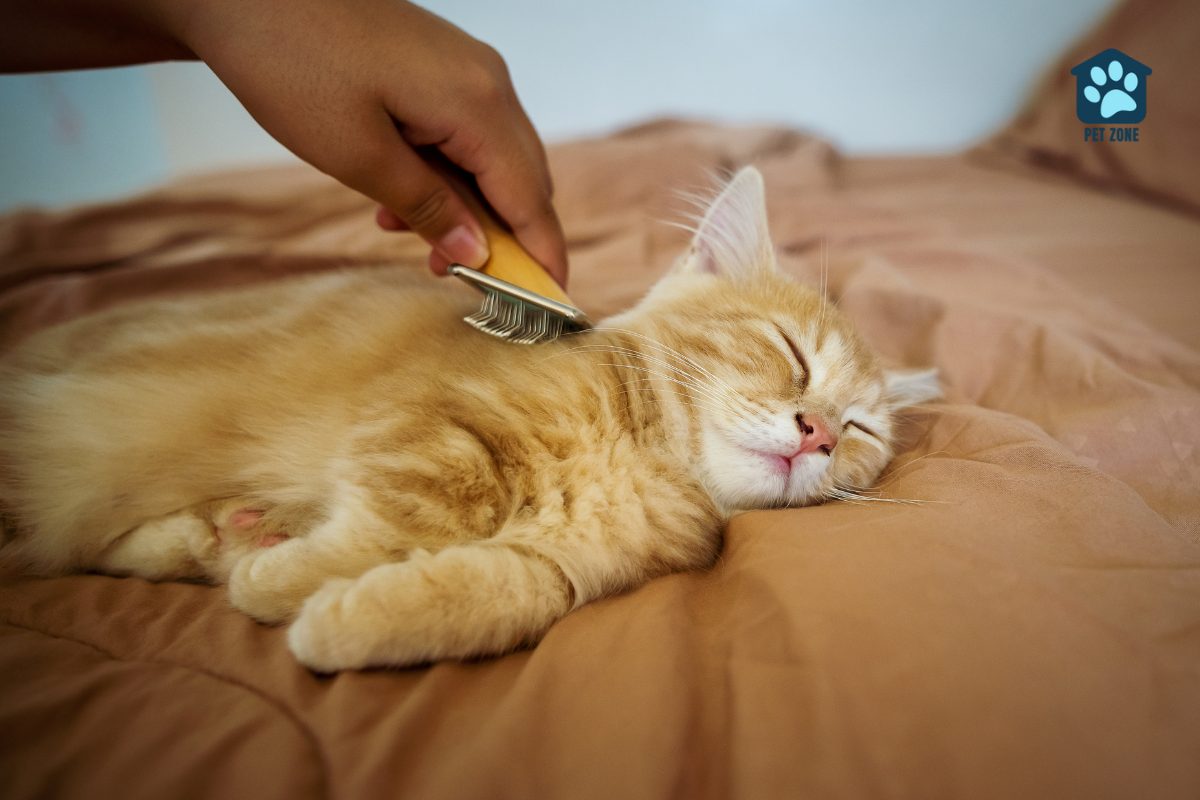
Common Mistakes to Avoid While Grooming
To ensure a successful grooming session with your long-haired cat, it’s important to be mindful of common mistakes to avoid. These include pulling or tugging on the hair, using harsh chemicals, cutting too much hair, and overhandling or restraining the cat.
By being aware of these potential errors, you can create a positive and comfortable grooming experience for your feline friend.
Pulling or Tugging on the Hair
Be careful when grooming your long-haired cat. Avoid pulling or tugging on the hair as this can cause discomfort and skin irritation for your cat. Be gentle when brushing, especially around tangled areas, to prevent any discomfort for your furry friend.
Using Harsh Chemicals
Using harsh chemicals or shampoos can dry out a long-haired cat’s skin or irritate their eyes and ears. Cats are more sensitive to certain substances, so it’s crucial to choose a mild, cat-specific shampoo and rinse the cat thoroughly to avoid any adverse reactions.
Long-haired cats can easily absorb chemicals and pollutants from their environment due to their fur, making it even more important to be cautious about the products used during grooming.
Always opt for gentle products specially formulated for cats to keep your feline friend healthy and comfortable.
Cutting Too Much Hair
Cutting too much hair can happen if you use scissors or electric clippers without caution. Cats with long fur are prone to mats, and trying to cut them out on your own can lead to trimming more hair than intended. Mats too close to the skin may need to be shaved.
Also, over-grooming due to stress might cause a cat to excessively lick or chew its fur, resulting in cutting too much hair unintentionally. It’s important to be mindful of the tools and the cat’s behavior during grooming sessions to prevent accidentally taking off too much fur.
Improper cutting could lead to skin irritation and expose your feline friend to potential infections. If you’re unsure about handling matting issues or suspect stress-related over-grooming, consult a professional groomer for guidance.
Overhandling or Restraining the Cat
When grooming your long-haired cat, avoid overhandling or restraining them too tightly. Doing so can make your cat feel stressed and uncomfortable during the grooming process. It’s important to be gentle and patient, allowing your cat to feel relaxed while being groomed.
Using restraints or heavy gloves may also cause more stress for your cat rather than making the grooming process easier.
Ignoring warning signs of aggression from your cat during grooming can lead to an increase in aggressive behavior in the future. Always pay attention to how your cat is reacting and provide positive reinforcement when they show good behavior during grooming sessions.
Recommended Grooming Products
Invest in cat-friendly shampoos, suitable brushes and combs, safe nail clippers, and effective toothbrushes and toothpaste to ensure your long-haired cat receives the best care possible.
Cat-Friendly Shampoos
Cat-friendly shampoos are specifically designed for cats, considering their skin’s unique thickness and pH levels. Using human shampoo or dish soap can lead to skin problems for cats, so it’s crucial to opt for pet-specific shampoos and conditioners.
When bathing your long-haired cat, natural degreasing shampoos are recommended as they effectively cleanse the skin and hair without causing any harm. It is important to never use human shampoo on cats as it may dry out their skin due to its unsuitability for cat hair.
When grooming your long-haired feline friend, make sure you invest in a good quality cat shampoo tailored for their specific needs. This will help maintain the health and luster of their coat while keeping potential skin issues at bay.
Here is our recommended cat-friendly shampoo!
This kitty shampoo is free of fragrances, sulfates, colorants, and harsh chemicals that irritate sensitive cat skin, making this a great cat shampoo for sensitive skin.
Add this shampoo to your cat supplies kit so that you always have your premium cat shampoo on hand when you need it.
- Hypoallergenic
- Made with high-quality natural ingredients
Suitable Brushes and Combs
After choosing the right cat-friendly shampoo, it’s essential to use suitable brushes and combs for grooming your long-haired cat. Long-toothed metal combs are a great choice for removing knots and tangles from thick fur.
Slicker brushes with fine, closely spaced bristles can effectively remove loose hair and prevent mats from forming. The Two-in-One Rake, Dual-Length Metal Comb, and High-Quality Slicker Brush are highly recommended tools for grooming long-haired cats.
Additionally, the Hepper Brush for Long-Haired Cats is known as the best overall brush for long-haired cats due to its effectiveness in detangling thick fur while keeping shedding at bay.
Effective grooming tools like the Safari Self-Cleaning Slicker Brush and JW Pet Gripsoft Cat Slicker Brush can also help keep your long-haired cat’s coat free from mats and tangles without causing discomfort.
Safe Nail Clippers
Choose safe nail clippers when grooming your long-haired cat. Look for Gonicc Pet Nail Clippers with a built-in safety guard to protect your cat from distress. Zen Clipper Cat Nail Clippers are also a great choice, as they have quick guards that make it easier to avoid cutting the quick.
Consider trying scissors-style nail clippers like the JW Pet Gripsoft Cat Nail Clipper, which are designed with divots to securely trim your cat’s nails without accidents. These options can help you ensure a safe and stress-free experience for both you and your feline friend during nail trimming sessions.
Effective Toothbrushes and Toothpaste
When grooming your long-haired cat, it’s essential to pay attention to their dental hygiene. Using a soft-bristled toothbrush and cat-specific toothpaste is the best way to keep your cat’s teeth clean and healthy.
Human toothpaste should be avoided as it contains fluoride, which can be toxic to cats since they cannot rinse or spit it out.
Regular brushing with appropriate tools helps prevent dental issues in long-haired cats. Toothbrushes and toothpaste designed for feline use are indispensable grooming products that contribute significantly to your cat’s overall health and well-being.
Encouraging Good Behavior with Treats
During grooming, you can use treats to encourage good behavior in your long-haired cat. Positive reinforcement is crucial for training cats, and giving treats or affection can help reinforce positive behavior during grooming sessions.
When your cat behaves well, reward them with a small treat or some extra affection to create a positive association with grooming. This will make the grooming process more pleasant for both you and your furry friend.
Positive reinforcement is recommended for training cats, whether it’s for grooming or learning tricks. It helps in creating a stress-free and cooperative environment during grooming sessions.
By using treats as an incentive, you can build trust and strengthen the bond between you and your long-haired cat while ensuring a smooth grooming experience.
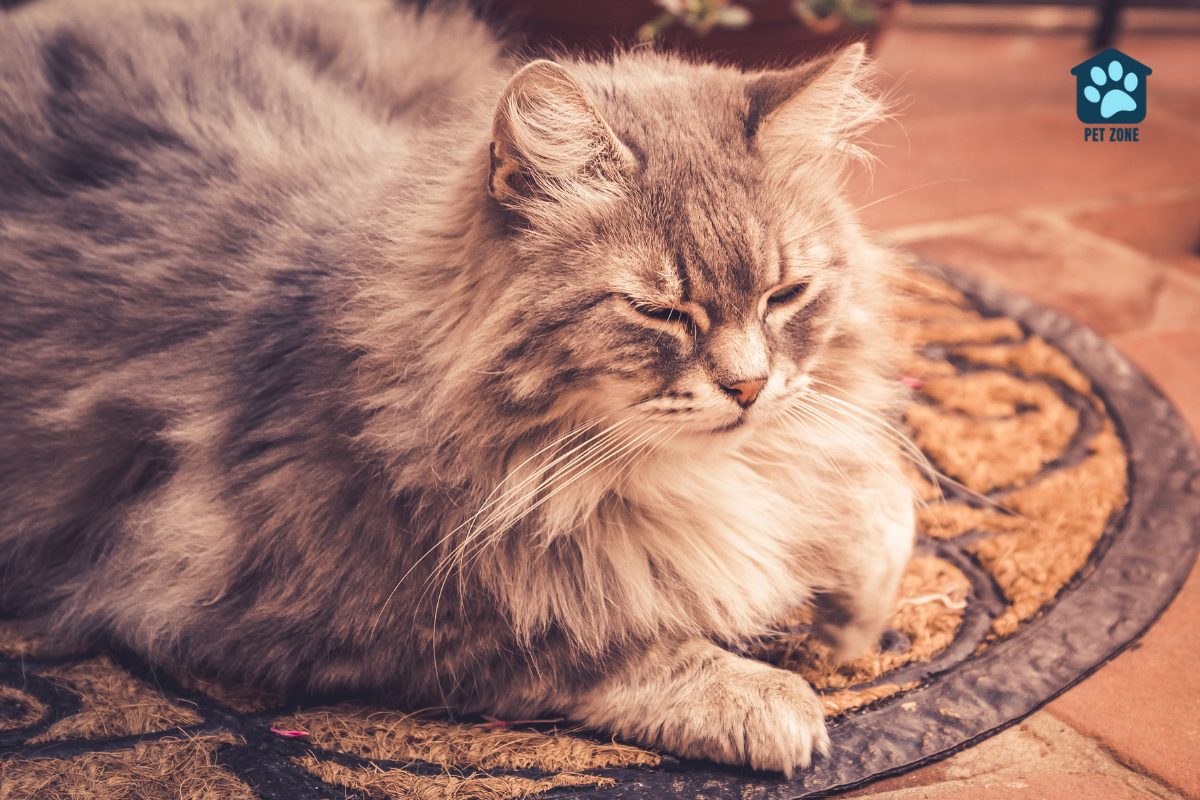
Conclusion
Have you considered the impact of regular grooming in preventing mats, reducing hairballs, and maintaining your cat’s well-being? Consistent grooming not only benefits your cat but also deepens the bond between you both.
The key steps outlined, such as setting a routine and using suitable grooming products, are practical and easy to implement. Take action today by incorporating these strategies into your cat care routine, ensuring a happy and healthy life for your beloved feline companion.
As an Amazon Associate I earn from qualifying purchases.
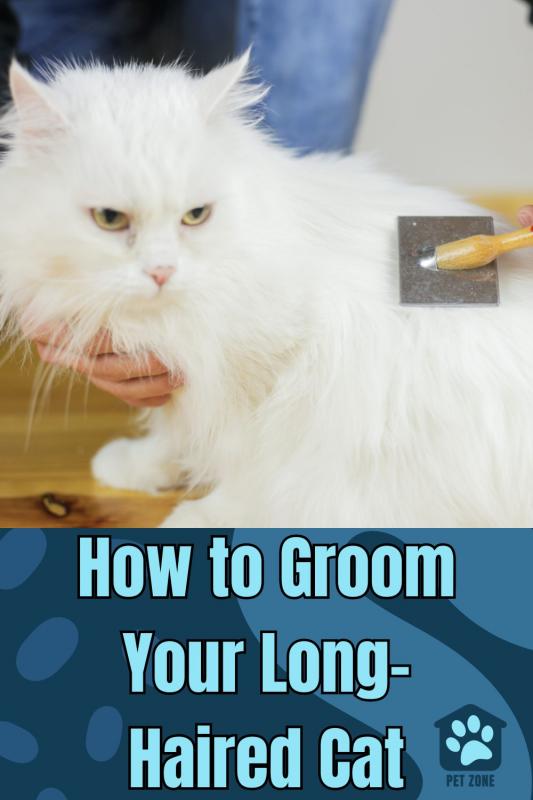


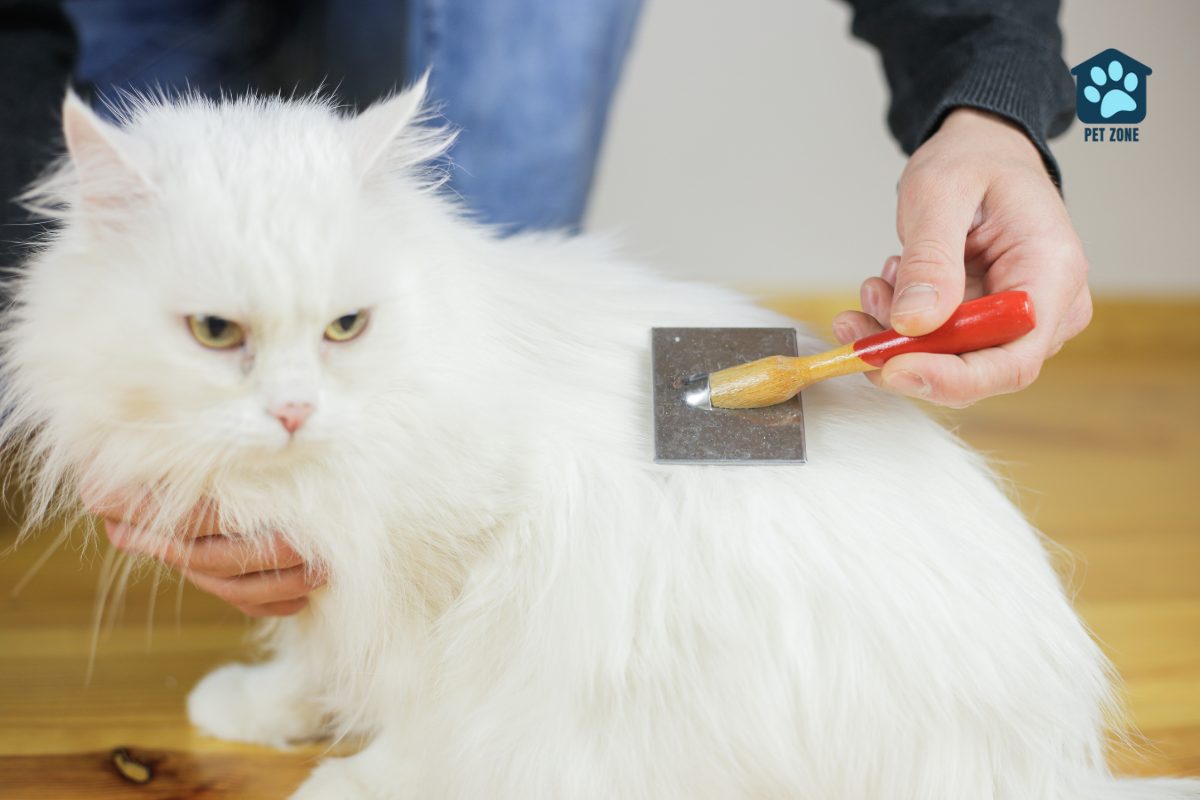
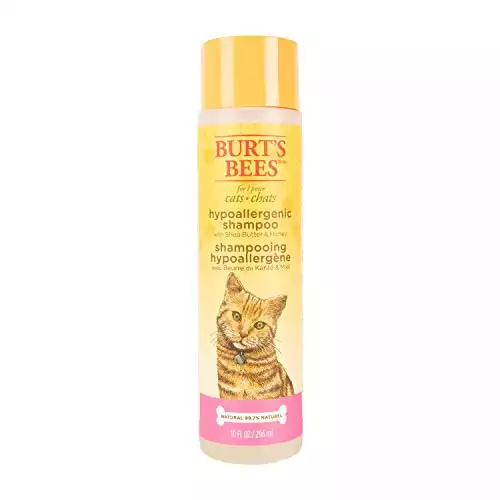
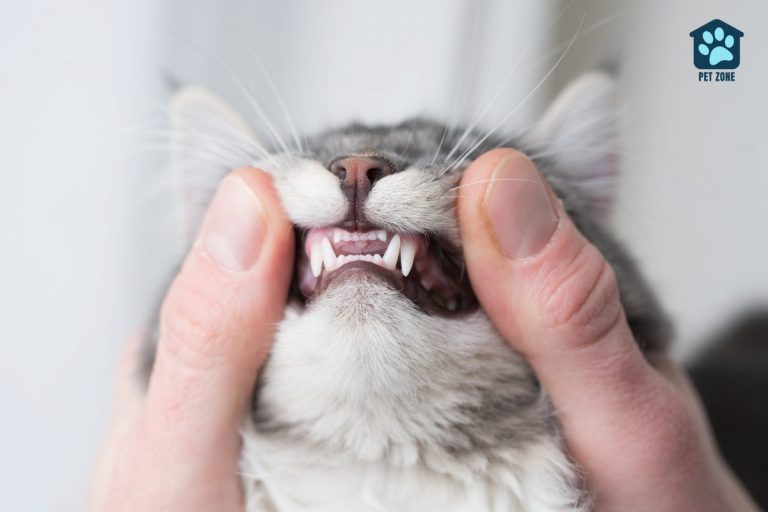
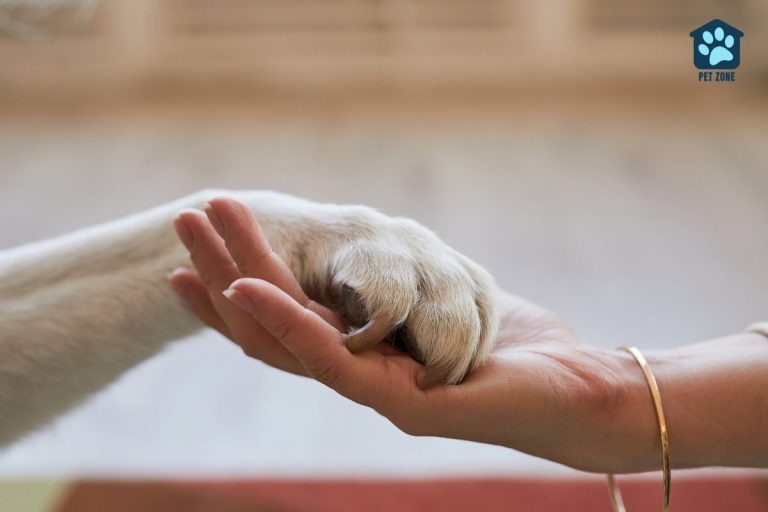
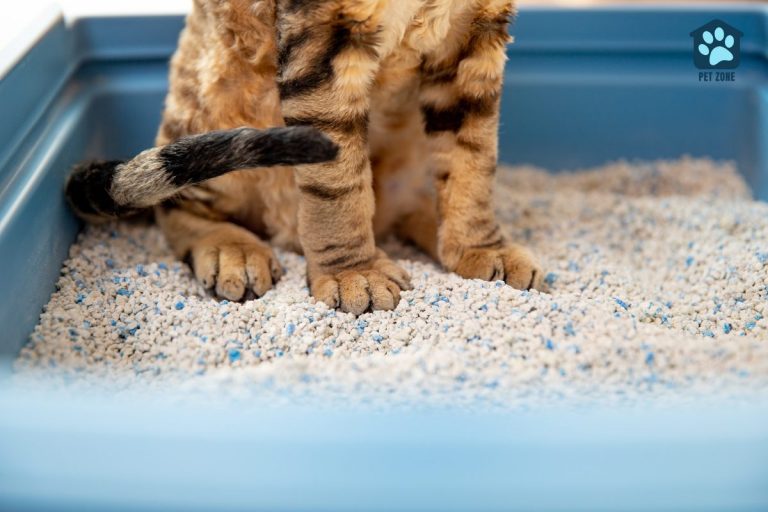
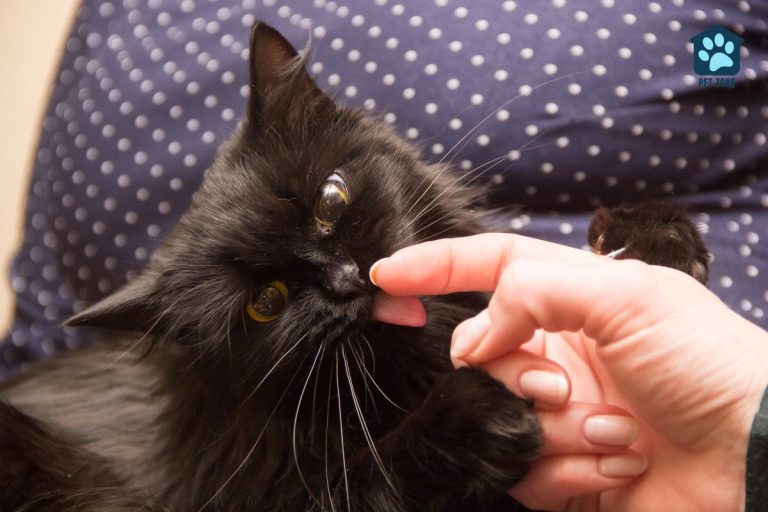
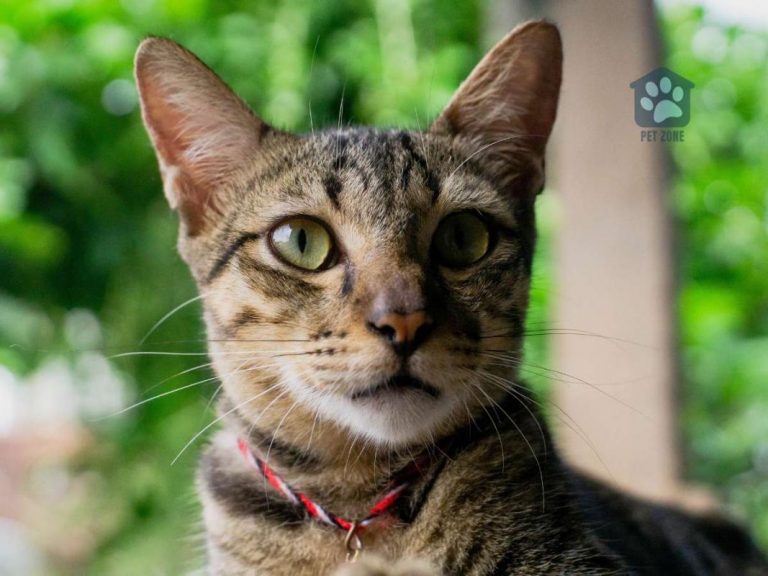
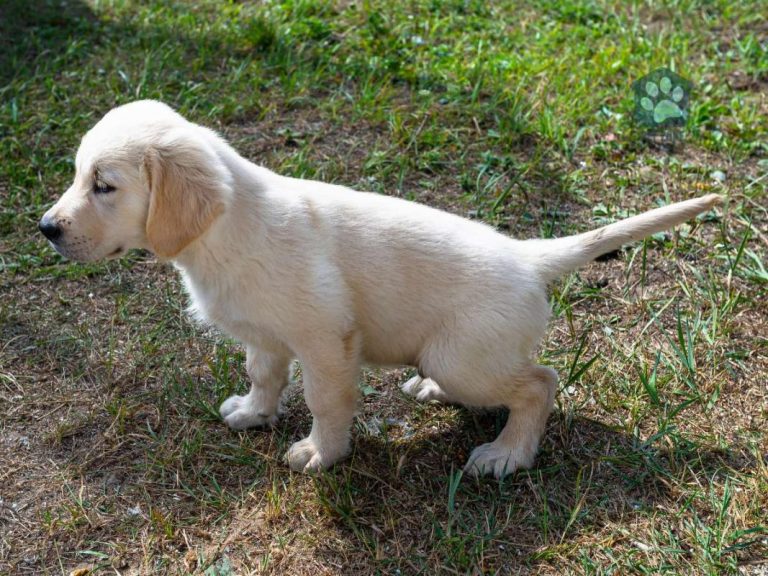
Nice article:) thank you 😊